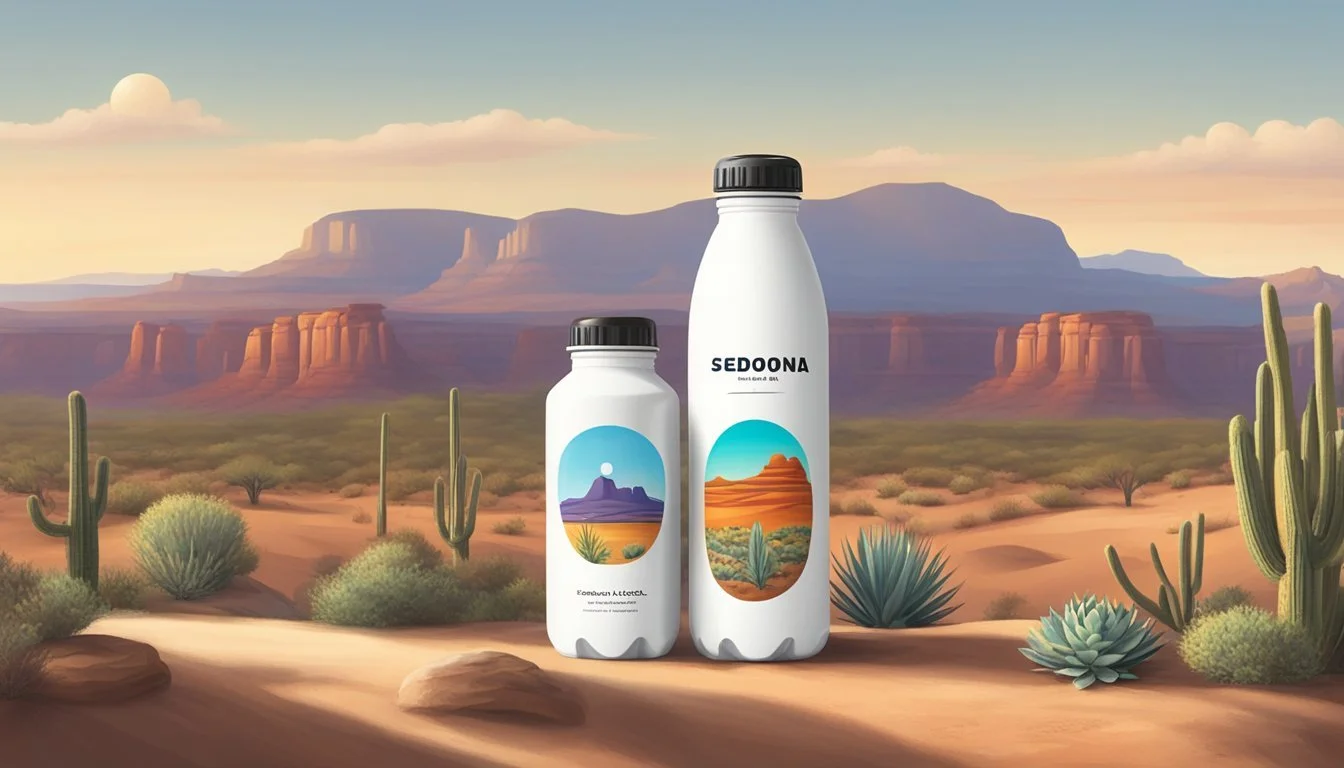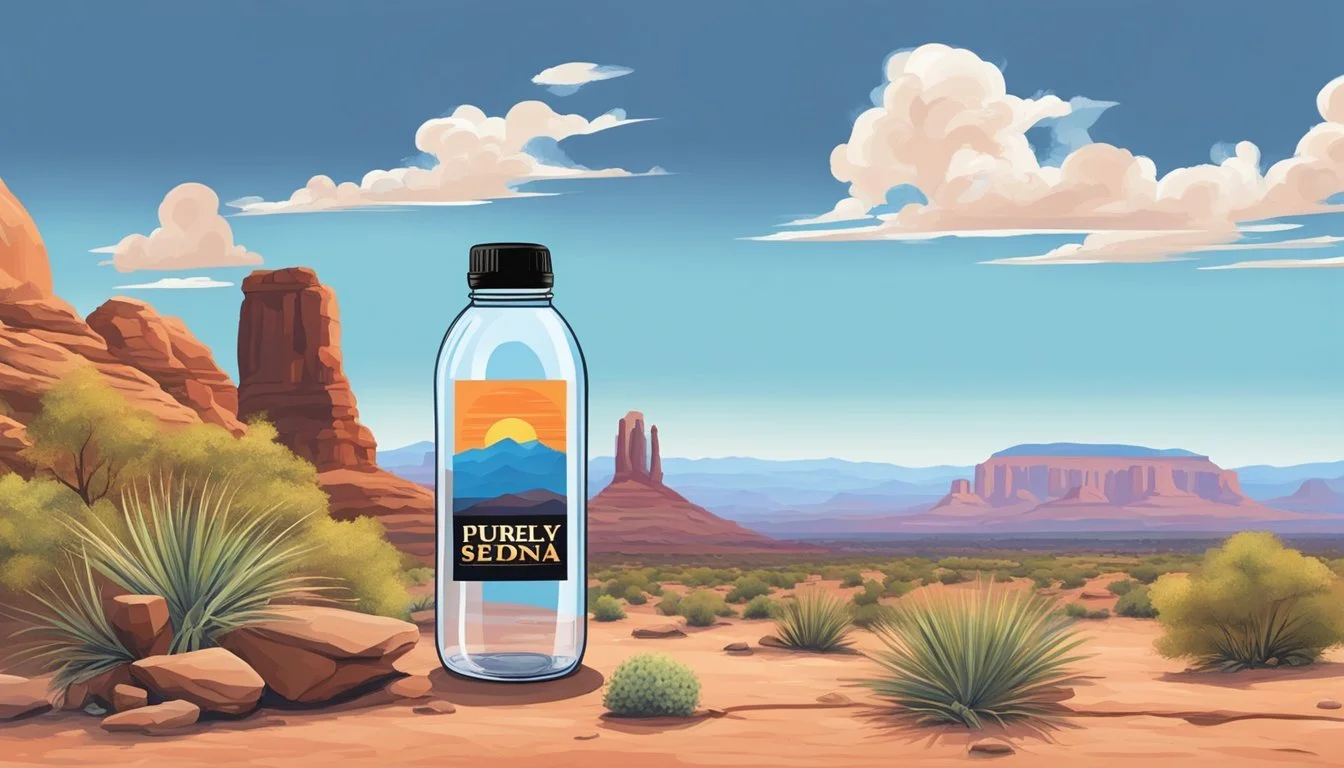Purely Sedona vs. Pure Life
Comparing Bottled Water Quality
Choosing the best bottled water can be a daunting task given the variety of brands available today. Two popular options are Purely Sedona and Pure Life. Purely Sedona prides itself on purity and local heritage, offering water sourced from Sedona springs. This gives it a unique position in the market as a premium brand.
Pure Life, on the other hand, is known for its mass production and global distribution under the Nestlé Waters banner. While it is one of the most widely recognized brands, it has often been criticized for its taste and quality. When comparing Purely Sedona and Pure Life, Purely Sedona generally stands out for its superior taste and higher quality source.
Consumers looking for higher quality and taste in bottled water are likely to lean towards Purely Sedona, making it the favorable choice over Pure Life. This initial insight sets the stage to explore the detailed aspects of each brand, from sources to taste tests, in the sections that follow.
Background Of Bottled Water Industry
The bottled water industry has seen significant growth over the past few decades. This section explores how different brands have emerged, the distinction between natural spring and purified water, and the environmental implications of bottled water consumption.
Rise of Bottled Water Brands
The bottled water market has expanded dramatically, driven by increasing health consciousness among consumers. Brands like Purely Sedona and Pure Life exemplify this trend, with each offering unique selling points.
Purely Sedona markets itself as a high-quality, local brand, emphasizing purity and heritage.
Pure Life, on the other hand, targets a broader demographic with a more accessible price point, promoting its purified water as safe and clean.
These branding strategies cater to diverse consumer needs, from premium preferences to budget-friendly options.
Comparing Natural Spring Water and Purified Water
Natural spring water and purified water differ fundamentally in their sources and treatment processes.
Natural spring water like Purely Sedona, originates from underground springs. It is often valued for its mineral content and natural filtration, which may enhance taste and perceived health benefits.
Purified water, such as Pure Life, undergoes various purification processes including distillation, deionization, or reverse osmosis. This ensures the removal of impurities and contaminants, making it a safe choice for everyday consumption.
Key Differences:
Source: Natural spring vs. municipal sources
Treatment: Minimal filtration vs. extensive purification
Taste: Mineral-rich vs. neutral
Environmental Impact of Bottled Water
The environmental impact of bottled water is a growing concern. The production and disposal of plastic bottles contribute significantly to plastic waste.
Plastic Waste: Millions of tons of plastic waste are generated annually from bottled water, with a significant portion ending up in landfills and oceans.
Carbon Footprint: The manufacturing, transportation, and refrigeration of bottled water also contribute to greenhouse gas emissions.
Efforts to reduce environmental impact include:
Recycling Programs: Encouraging consumers to recycle bottles.
Biodegradable Packaging: Developing alternative packaging materials.
Water Source Management: Ensuring sustainable sourcing practices.
These initiatives aim to lessen the ecological footprint of the bottled water industry.
Health and Hydration
Both Purely Sedona and Pure Life bottled water brands offer distinct health benefits and considerations. This analysis delves into their mineral content, the importance of hydration, and the health aspects of bottled versus tap water.
Mineral Content and Its Effects on Health
Mineral content in drinking water can significantly impact health. Purely Sedona, sourced from artesian wells in Sedona, Arizona, tends to have a higher mineral content compared to Pure Life.
These minerals, including calcium and magnesium, contribute to the body's electrolyte balance and bone health.
Pure Life, while emphasizing affordability, may have lower mineral content. However, it still provides essential hydration without the heavy mineral load, making it suitable for individuals who prefer a lighter taste and those monitoring their mineral intake.
Hydration and Its Importance
Hydration is a crucial aspect of overall health, influencing physical performance, cognitive function, and overall well-being.
Purely Sedona and Pure Life both help users maintain optimal hydration levels. Purely Sedona, with its artisan roots, might appeal to individuals seeking a premium hydration experience, whereas Pure Life is accessible and reliable for everyday use.
Consistent hydration aids in temperature regulation, joint lubrication, and toxin elimination. Addressing daily hydration needs with clean, accessible options like these bottled waters supports health and vitality.
Bottled vs. Tap Water: Health Considerations
When considering bottled versus tap water, several health factors emerge. Bottled water such as Purely Sedona and Pure Life often undergoes rigorous purification to ensure cleanliness and safety.
Tap water's quality can vary depending on local regulations and infrastructure.
While bottled water offers convenience and assured purity, it's essential to consider environmental impacts and cost. Tap water, generally more sustainable and cost-effective, may contain fluoride, which supports dental health.
However, concerns about contaminants in tap water may lead consumers to prefer the security of bottled options like Purely Sedona and Pure Life.
Comparative Analysis of Water Brands
Examining Purely Sedona and Pure Life reveals key differences in their branding, taste, and packaging. Understanding these characteristics can help consumers make informed choices.
Purely Sedona and Pure Life: Brand Overview
Purely Sedona markets itself as a premium brand emphasizing purity and local heritage. It sources its water from natural springs in Sedona, Arizona, appealing to those who value origin and quality.
In contrast, Pure Life is more accessible and widely recognized. Originating under Nestlé, it focuses on providing safe, purified drinking water. The brand’s broad distribution network makes it a convenient choice for many consumers.
Taste Profile Comparison
Purely Sedona is often praised for its clean and crisp taste, attributable to its natural spring origins. This water contains natural electrolytes, which can enhance flavor and refreshment.
Pure Life has a neutral taste due to the purification process it undergoes. While it might lack the distinct mineral flavor of some natural waters, its consistency and safety appeal to those preferring a straightforward drinking experience.
Packaging and Accessibility
Purely Sedona is often available in elegant glass bottles, reflecting its premium status. The glass packaging enhances the drinking experience and appeals to environmentally-conscious consumers.
Pure Life mostly comes in plastic bottles, making it more versatile and practical for everyday use. Its wide availability in various sizes ensures accessibility for a broad audience, from individual servings to family-sized options.
By focusing on these aspects, one can understand the distinct factors that set these two water brands apart, helping consumers choose according to their preferences and needs.
Scientific Breakdown
When comparing Purely Sedona and Pure Life, it's essential to analyze the different scientific aspects that contribute to the quality and perception of these bottled water brands.
Reverse Osmosis and Filtration Processes
Purely Sedona utilizes a natural filtration process through volcanic rocks and sedimentation, which is claimed to naturally purify the water. This method emphasizes a minimal human intervention approach, ensuring that the water maintains its natural minerals and characteristics.
Conversely, Pure Life predominantly relies on reverse osmosis technology to purify its water. This process involves forcing water through a semi-permeable membrane, removing contaminants, minerals, and impurities. As a result, the water is heavily filtered, often requiring the re-addition of minerals to enhance taste and nutritional value.
Analysis of Mineral Composition
The mineral composition in bottled water significantly impacts taste, health benefits, and brand differentiation. Purely Sedona prides itself on its naturally occurring minerals, including magnesium, calcium, and potassium. These minerals are absorbed from the geological formations it passes through, giving it a distinct taste and fostering potential health benefits.
In comparison, Pure Life's mineral content is less about natural absorption and more about what is reintroduced after the reverse osmosis process. Sodium, calcium, and magnesium are commonly added back to improve its profile. The carefully controlled addition ensures a consistent taste but may lack the unique properties of naturally sourced minerals.
Understanding Alkalinity in Water
Alkalinity measures a water's ability to neutralize acids and is influenced by its mineral content. Purely Sedona often boasts a higher alkalinity due to its passage through mineral-rich volcanic rocks, which contribute natural alkaline properties. Higher alkalinity is sometimes associated with better hydration and potential neutralization of body acidity.
Pure Life's alkalinity, on the other hand, is managed through the reverse osmosis process and subsequent mineral re-addition. While this makes it highly controllable and consistent, its alkalinity might not be as naturally varied as that of Purely Sedona.
In conclusion, while both brands provide high-quality bottled water, their differences in filtration processes, mineral compositions, and alkalinity levels cater to different preferences and needs.
Source and Purity
Both Purely Sedona and Pure Life emphasize the importance of water quality and source selection to their consumers. The following details will examine their water sources and how they ensure purity and quality in their products.
Water Sources: Springs vs. Man-Made Systems
Purely Sedona sources its water from a protected spring located in Oak Creek Canyon, Sedona, Arizona. This spring is registered and meets stringent environmental standards. The natural setting of Oak Creek Canyon provides a unique mineral profile, contributing to the water's taste and health benefits.
Pure Life, in contrast, often sources its water from multiple locations, including man-made systems. This can include municipal sources that are then treated and purified. The versatility in sourcing allows for consistent availability, but the water's origin may vary, affecting its mineral content and taste.
Comparison:
Purely Sedona: Natural spring, stable mineral profile
Pure Life: Man-made and natural sources, varied mineral content
Purity Standards and Quality Reports
Purely Sedona maintains high purity standards to ensure their bottled water is free from contaminants. The spring's naturally filtered water undergoes minimal treatment, preserving its original qualities. Regular quality reports affirm compliance with health and safety regulations.
Pure Life also adheres to rigorous purity standards. The water sourced from municipal systems undergoes extensive treatment processes, including filtration, reverse osmosis, and UV disinfection. This ensures that Pure Life meets all national water quality standards.
Both brands provide transparency through quality reports, reflecting their dedication to consumer health. These reports can typically be found on their websites or by contacting customer service directly.
Comparison:
Purely Sedona: Minimal treatment, natural purity
Pure Life: Extensive purification processes, variable sources
Sustainability and Corporate Responsibility
Both Purely Sedona and Pure Life have focused efforts on sustainability and corporate responsibility, but their approaches and achievements vary. Differences in environmental policies and consumer influence on sustainability practices make each brand stand out.
Environmental Policies of Bottling Companies
Purely Sedona sources its water from a protected spring in Oak Creek Canyon, Arizona. It emphasizes eco-friendly packaging and minimal carbon emissions during transport. The company uses recyclable materials and has implemented reductions in water waste and energy use during the bottling process.
Pure Life, a Nestlé brand, aims to balance accessibility with environmental stewardship. Nestlé’s broader corporate policies reflect commitments to reducing carbon emissions and using renewable energy sources. Nestlé has also focused on water conservation projects, aiming to replenish water sources more than they extract globally.
Consumer Influence on Sustainability Practices
Consumer demand has significantly influenced the sustainability practices of both companies. Purely Sedona appeals to environmentally-conscious customers with its emphasis on local sourcing and eco-friendly packaging. This consumer base pushes for transparency and accountability, prompting the company to maintain high standards in sustainable practices.
Pure Life benefits from a broad consumer base that expects affordable and accessible bottled water, influencing Nestlé to implement large-scale sustainability measures. This includes efficient manufacturing processes and investments in renewable energy projects. The brand's widespread availability ties closely with its efforts to mitigate environmental impact, balancing consumer needs with eco-friendly initiatives.
Pricing and Accessibility
Both Purely Sedona and Pure Life cater to specific market segments, each with distinct pricing strategies and levels of accessibility. Purely Sedona targets premium consumers, while Pure Life offers budget-friendly options.
Cost Analysis of Premium Bottled Water
Purely Sedona positions itself as a premium brand. The higher price point reflects its emphasis on purity and local heritage. For example, a 12-pack of 1-liter bottles can often be found at prices ranging from $20 to $25. This cost is justified through its marketing that highlights local sourcing and minimal environmental impact.
Pure Life, in contrast, is known for affordability. A similar pack of 1-liter bottles usually costs between $7 to $10. Its pricing strategy aims at reaching a broad audience, making it accessible to cost-conscious consumers. This affordability does not mean lesser quality—it still provides clean, safe drinking water.
Market Availability and Consumer Choices
Market Accessibility plays a significant role in consumer choice. Purely Sedona is often found in specialty stores, high-end supermarkets, and online platforms. Its availability is more limited, contributing to its premium image and sometimes making it inconvenient for some consumers.
Pure Life benefits from widespread distribution. You can find it in just about every supermarket, convenience store, and bulk retailer. This widespread availability coupled with a lower price makes it an everyday choice for many households.
Consumers looking for a balance between quality and budget will lean towards Pure Life. However, those seeking a premium, locally-sourced option might prefer Purely Sedona despite its higher cost and limited availability.
Safety and Regulation
When it comes to bottled water, safety and regulatory standards are crucial. Purely Sedona and Pure Life must adhere to stringent guidelines to ensure consumer protection and product quality.
Quality Assurance and Regulation by Authorities
Both Purely Sedona and Pure Life are subject to regulations by authoritative bodies like the U.S. Food and Drug Administration (FDA) and the Environmental Protection Agency (EPA). These regulations ensure that bottled water is safe for consumption.
The FDA oversees bottled water, requiring manufacturers to comply with specific standards for contamination limits, labeling, and good manufacturing practices (GMPs). Regular inspections and quality control measures help maintain product integrity.
Pure Life follows Nestlé's stringent internal quality protocols. Purely Sedona, emphasizing local heritage, also aligns its practices with regulatory requirements to uphold its market reputation.
Addressing Concerns over Contaminants
Concerns over contaminants such as lead, chemicals, or microbiological agents can significantly impact consumer confidence. Both brands engage in rigorous testing to detect and address potential contaminants.
For lead and other heavy metals, both Purely Sedona and Pure Life adhere to strict guidelines ensuring levels are well below harmful thresholds. Microbiological safety is also prioritized, with frequent testing for bacteria like E. coli.
These measures are crucial for maintaining consumer trust and ensuring that every bottle of water is safe to drink. Ongoing quality monitoring by both brands assures the public of the purity and safety of their products.
Consumer Guidance
When choosing between Purely Sedona and Pure Life, it is crucial to be informed about water quality reports and how to select the right bottled water. Making better choices ensures optimal hydration and satisfaction.
How to Read Water Quality Reports
Water quality reports provide key information about the source, mineral content, and purity of bottled water. These reports are often available on the brand's website or through consumer resources like Consumer Reports.
Look for details on:
Source: Identifies where the water is sourced and how it is treated.
Mineral Content: Information on essential minerals such as calcium and magnesium.
Contaminants: Indicates if there are any traces of harmful substances.
Understanding these aspects helps in evaluating the overall quality and safety of the bottled water you choose.
Tips for Choosing the Right Bottled Water
Consider several factors when selecting between Purely Sedona and Pure Life to ensure you choose the best option for your needs.
Taste Preferences: Evaluate taste based on personal preference. Some people prefer the mineral-rich flavor of Purely Sedona, while others might favor the clean taste of Pure Life.
Price and Availability: Consider your budget and the availability of the water in your area.
Environmental Impact: Check the brand's commitment to sustainability. For instance, Purely Sedona might have environmentally-friendly packaging.
By balancing these aspects, you can make an informed decision suited to your hydration needs.
Conclusion
Purely Sedona and Pure Life each offer unique advantages.
Purely Sedona emphasizes purity and local heritage, a key factor in its branding. Its affordable price makes it attractive to a broader audience. Price per bottle ranges from $1.50 to $3.00, making it a budget-friendly option.
Pure Life faces criticism for its sources but remains prevalent. It tends to be less expensive than many premium brands.
When considering taste, price, and source reputation, individuals must decide which factors hold the most importance for them. Each factor influences the decision-making process in selecting the better bottled water for personal needs.
More About Purely Sedona
More About Pure Life
Cascade Mountain vs Pure Life: Which Bottled Water is Better?
Hawaii Volcanic vs Pure Life: Which Bottled Water is Better?
Hawaiian Springs vs Pure Life: Which Bottled Water is Better?
Icelandic Glacial vs Pure Life: Which Bottled Water is Better?
Nestle Pure Life vs Pure Life: Which Bottled Water is Better?
Pure Life vs Kirkland Signature: Which Bottled Water is Better?
Pure Life vs Whole Foods 365: Which Bottled Water is Better?
Richard's Rainwater vs Pure Life: Which Bottled Water is Better?
Solan de Cabras vs Pure Life: Which Bottled Water is Better?
Talking Rain AQA vs Pure Life: Which Bottled Water is Better?
Whole Foods Italian Still Mineral water vs Pure Life: Which Bottled Water is Better?






